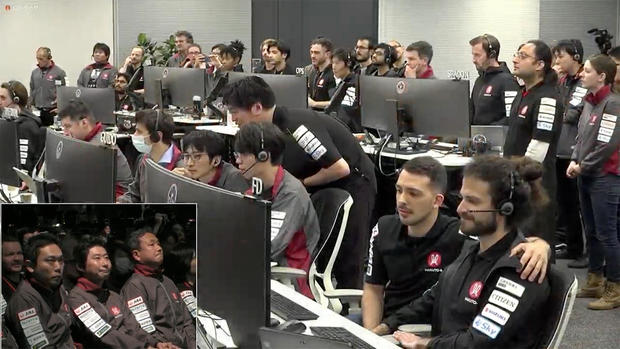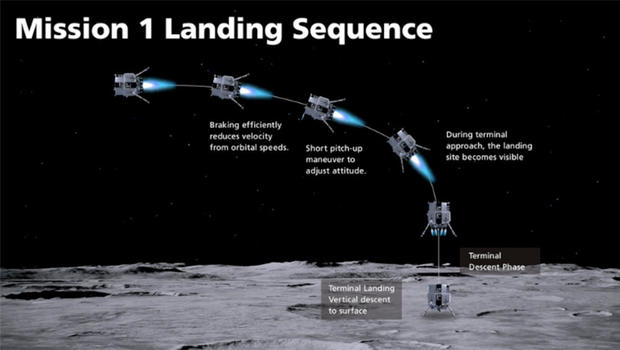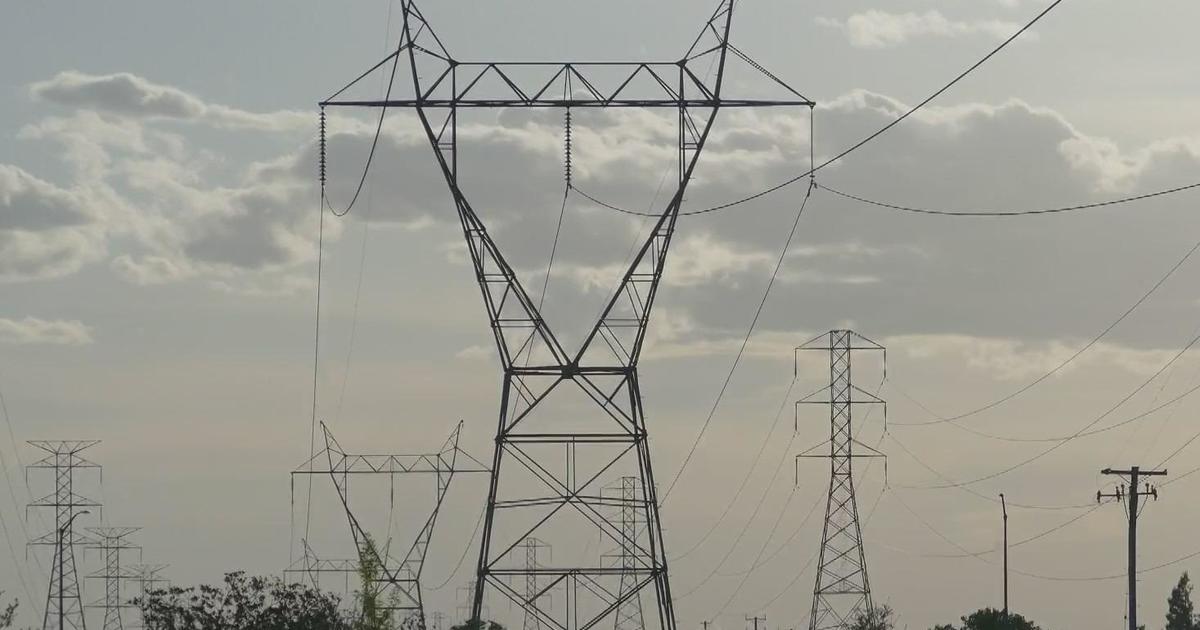Historic Japanese moon landing attempt appears failed after ispace craft loses contact
A small, privately-funded Japanese spacecraft attempted to land on the moon Tuesday, but flight controllers in Tokyo lost contact with the craft during the final minutes of its descent when it apparently ran out of fuel and crashed to the surface in a "hard landing."
"We have not been able to confirm (a) successful landing on the lunar surface," said Takeshi Hakamada, founder and CEO of ispace, the company that launched the mission.
"Our engineers at (mission control) continue to investigate the current status of the lander," he said. "Currently, we have not confirmed communications from the lander. ... So we have to assume that we could not complete the landing."
Launched last December atop a SpaceX Falcon 9 rocket, ispace's Mission 1, or M1 spacecraft, slipped into an initially elliptical orbit around the moon on March 21. Thruster firings then put the craft in a circular orbit at an altitude of about 62 miles.
At about 11:40 a.m. Tuesday, the probe's AI-enabled flight computer fired thrusters to slow down and drop out of orbit, kicking off an hourlong descent to a planned touchdown on the floor of a 54-mile-wide crater named Atlas.
The spacecraft appeared to be performing normally, at least up to the last few minutes of the descent when contact was interrupted. At that point, the probe apparently was descending at about 21 mph as it passed through an altitude of 300 feet.
The expected time of landing then came and went, with no confirmation of touchdown or any other data from the M1.
Television cameras caught worried expressions in the mission control room as engineers monitored computer displays, looking for signs of life. After several more minutes, the livestream cut away to recorded video with the commentator's promise to provide updates as soon as possible.
Finally, after about 25 anxious minutes, Hakamada announced contact had not been restored and the mission was presumed lost. It was the second non-government lander to fail during descent to the moon after an Israeli spacecraft named Beresheet crashed in 2019.
Hakamada thanked ispace engineers, technicians and their families, saying "we are very proud of the fact that we have already achieved many things during this Mission 1 and that data will be fed into the company's upcoming lunar missions."
"We will keep going, never quit in (our) lunar quest," he said.
Late Tuesday, ispace released a statement saying the spacecraft was in the required vertical orientation during final descent. But as the probe neared the surface, telemetry showed the remaining propellant was near the "lower threshold" and "shortly afterward, the descent speed rapidly increased."
"Based on this, it has been determined that there is a high probability that the lander eventually made a hard landing on the moon's surface," the company said.
As a proof of concept, the M1 carried an AI-assisted 360-degree camera provided by Canadensys Aerospace, an experimental Niterra solid-stage battery and a sophisticated flight computer, but no science instruments of its own. Instead, it ferried two small moon rovers to the moon.
United Arab Emirates provided a 22-pound rover known as Rashid that was designed to roll down a ramp and onto the surface later in the 10-day mission to study the local geology, soil properties, dust movement and the electrically charged plasma environment.
An even smaller half-pound rover the size of a baseball, known as the Japanese Lunar Excursion Vehicle, was equipped with its own cameras for independent research sponsored by the Japan Aerospace Exploration Agency, or JAXA.
Hakamada said before launch the company's primary goal was to foster development of a lunar economy and infrastructure by providing rapid access to the surface of the moon, augmenting NASA's Artemis program.
"It's an honor to become the first launch and the first (privately funded) landing on the lunar surface," Hakamada said in a pre-launch interview with CBS News. "However, this is not our goal. Our goal is to create a sustainable ecosystem.
"We need to have at least several competitors in this market. Otherwise, there's no incentive to grow this industry. So I'm very happy to have other competitors ... and growing this industry together with them."
One of those competitors, Astrobotic, tweeted congratulations to Ispace "on accomplishing a significant number of milestones."
"We hope everyone recognizes today is not the day to shy away from pursuing the lunar frontier, but a chance to learn from adversity and push forward," the company said.
Ispace began as Team Hakuto, a competitor in the Google Lunar X Prize, which offered a $20 million reward for the first privately-developed spacecraft to reach the lunar surface. No one got far enough to claim the prize, but the Hakuto team grew into Ispace, attracting the investment necessary to reach the launch pad.
The company's Hakuto-R lunar exploration program — the R stands for "reboot" — included two lunar landers, Mission 1 and Mission 2, which will take another rover to the moon in 2024. A third mission is also in the works.
While Artemis astronauts will reach the moon in four to five days, the M1 took a more round-about course, following a low-energy trajectory that carried it a million miles into space. The gravity of the sun and Earth, along with periodic firings of on-board thrusters, then combined to pull the craft back toward the moon.
Artemis astronauts will land near the moon's south pole, in part to search for ice deposits in permanently shadowed craters. Ice could provide a crucial source of water, air and rocket fuel for future astronauts if accessible deposits can be found.
Hakamada said ice is a critical enabler for the eventual development of a commercial infrastructure on and around the moon.
"We believe that's going to be the key to initiate the lunar economy," he said. "In order to utilize such resources, we believe that in the near term we need high-frequency transportation to the lunar surface to support scientific missions, exploration missions, and also technology demonstration missions.
"We are planning to offer frequent missions to the surface. After 2025, we plan to offer two to three missions per year."







